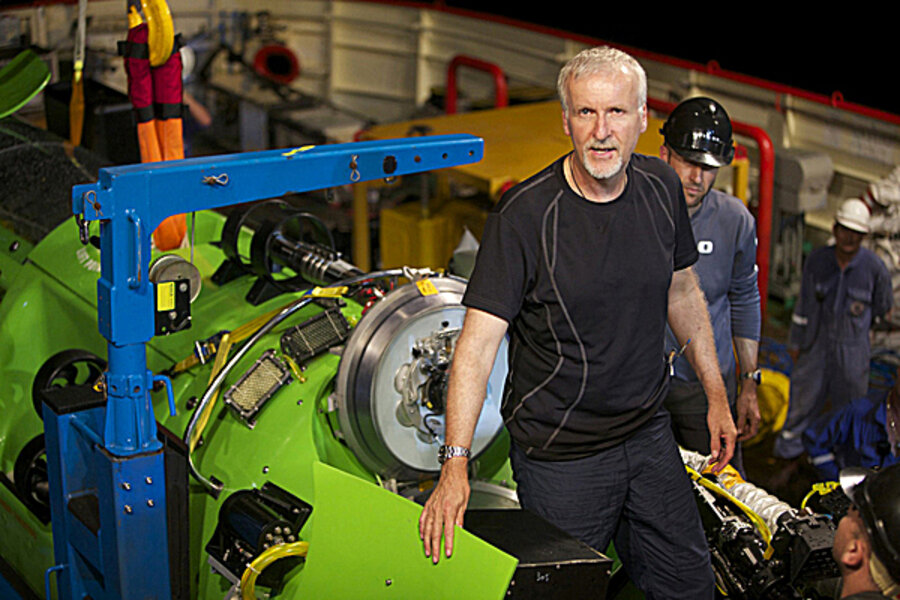James Cameron describes deepest spot in ocean as 'barren'
Loading...
James Cameron has returned from the abyss.
The director of "Titanic" and "Avatar" successfully completed the 6.8-mile dive to the Challenger Deep, thought to be the lowest point on Earth, and has returned to the surface. The filmmaker's verdict on the spot, which has been visited by humans only once before: "I just sat there looking out the window, looking at this barren, desolate lunar plain, appreciating," Cameron told the Associated Press.
In other words, he didn't see much, save for a few inch-long amphipods, shrimplike bottom feeders, scuttling across the soft ocean floor. Due to a hyraulic failure on his submarine's sample collector, Cameron was also unable to bring back much in the way of souvenirs.
Cameron is just the third person in history to visit Challenger Deep, which lies in the 1,500-mile-long Mariana Trench in the North Pacific. The other two adventurers, US Navy lieutenant Don Walsh and Swiss scientist Jacques Piccard, took their dive together in 1960. But they didn't see much, as their landing stirred up so much sediment that it obscured their vision. After just 20 minutes on the bottom, the two explorers returned to the surface empty-handed.
Unlike the vehicle that transported Walsh and Piccard, Cameron made his trip in the Deepsea Challenger, a vessel that is much taller than it is wide. This unique, 24-foot-long ship took eight years to build in Australia. It's cost hasn't been disclosed.
The vessel is innovative in several ways. To protect against the potentially crushing pressure in the deep sea, the project's lead engineer, Ron Allum, designed a new foam flotation material Isofloat that will not crack, compress or lose buoyancy on the journey. This foam makes up 70 percent of the submersible's volume.
Other important components of the sub are its lights and cameras. Cameron captured hi-resolution 3D footage during his dive.
Scientific feats such as trips to the bottom of the sea, are most commonly tackled by governments and scientific organizations. And other entrepreneurs like Richard Branson are also trying to get to the deepest part of the sea.
But Cameron has distinguished himself. Not only does he have access to the necessary fiscal resources, but his talent with a camera, curiosity and adventurous spirit set him apart.
“Imagination feeds exploration,” Cameron said, according to National Geographic, one of the trip's sponsors, before the journey. “You have to imagine the possible before you can go and do it.”
Though he has the necessary skills for the job, Cameron's physical attributes provided some challenges: All six feet, two inches of Cameron were crammed inside a metal sphere with a diameter at the surface of just 43 inches. During the dive, Cameron reported that his sub shrank by three inches, due to the immense pressure.
"I can't say it's very comfortable," Cameron told the AP. "And you can't stretch out."





